If you want lovely tropical foliage houseplants, including shingling ones, Rhaphidophora species are a great choice. They are easy to care for, and some have split and fenestrated leaves. You will even get variegated forms.
We have the most charming Rhaphidophora species like R. tetrasperma (mini Monstera), decursiva, hayi, cryptantha, korthalsii, foraminifera, among others. You will also get their prices, where to buy them.
That is not all. We have an insight into problems you may have, including pests, disease, leaves turning yellow, black, or having brown tips or edges, curling, etc.

Contents
- About Rhaphidophora
- Rhaphidophora species to buy
- 1. Rhaphidophora tetrasperma
- 2. Rhaphidophora decursiva
- 3. Rhaphidophora hayi
- 4. Rhaphidophora cryptantha
- 5. Rhaphidophora pertusa
- 6. Rhaphidophora foraminifera
- 7. Rhaphidophora korthalsii
- 8. Rhaphidophora pachyphylla
- 9. Rhaphidophora beccarii
- 10. Rhaphidophora tenuis
- Where to buy Rhaphidophora
- Rhaphidophora care
- Common Rhaphidophora problems
- 1. Pests
- 2. Diseases and root rot
- 3. Leaves turning yellow
- 4. Leaves turning black or having black spots
- 5. Brown leaves, edges, tips, or patches
- 6. Leaves curling
- 7. Drooping
About Rhaphidophora
Rhaphidophora is a genus with over 100 accepted species of evergreen medium to very large and sometimes gigantic, slender to robust root climbing lianas except for a few clustering and rheophytic (growing in fast-moving water) species.
They get their name Rhaphidophora from Greek words rhaphis or rhaphidos, meaning needle, and phérō, which means to bear. It comes from the fact that they have needle-like (up to 1cm) trichosclereids that protect the plants from herbivores.
Rhaphidophora has plants that retain their neotenic (juvenile) appearance and those that transform to have leaves that are large, entire, split, fenestrated or both. Also, some species shingle (grow appressed to the climbing surface, especially in the juvenile stage), and others have erect leaves.
Where do they naturally occur? They occur from tropical Africa (which has three species) eastward to the Western pacific through Australasia, Malesia, and up to southern Japan’s Ryukyu Islands.
You will find them climbing on tree trunks, rocks, and rarely fast-moving water in these places. And they grow in well-drained tropical and subtropical wet and humid areas. Typical habitats include those moderate seasonal drying to established, secondary evergreen forests in low to mid montane altitudes.
Rhaphidophora species to buy
If you are looking for the best Rhaphidophora species to buy, here are the best in the order of popularity.
- Rhaphidophora tetrasperma
- Rhaphidophora decursiva
- Rhaphidophora hayi
- Rhaphidophora cryptantha
- Rhaphidophora pertusa
- Rhaphidophora foraminifera
- Rhaphidophora korthalsii
- Rhaphidophora pachyphylla
- Rhaphidophora beccarii
- Rhaphidophora tenuis
Let us briefly look at each of the above raphidophora species that make great houseplants.
1. Rhaphidophora tetrasperma
Rhaphidophora tetrasperma (mini Monstera, Monstera minima or ginny, Philodendron ginny, etc.) has juvenile oval shingling leaves. But people grow it for the large, mature leaves with shallowly to deeply split leaves that may occasionally have rhombic holes near the midrib.
It does resemble a miniature version of Monstera deliciosa or the Swiss-cheese plant. But there are differences we talk about while looking at Rhaphidophora tetrasperma vs. Monstera deliciosa. Also, it does bear some similarities with R. pertusa.
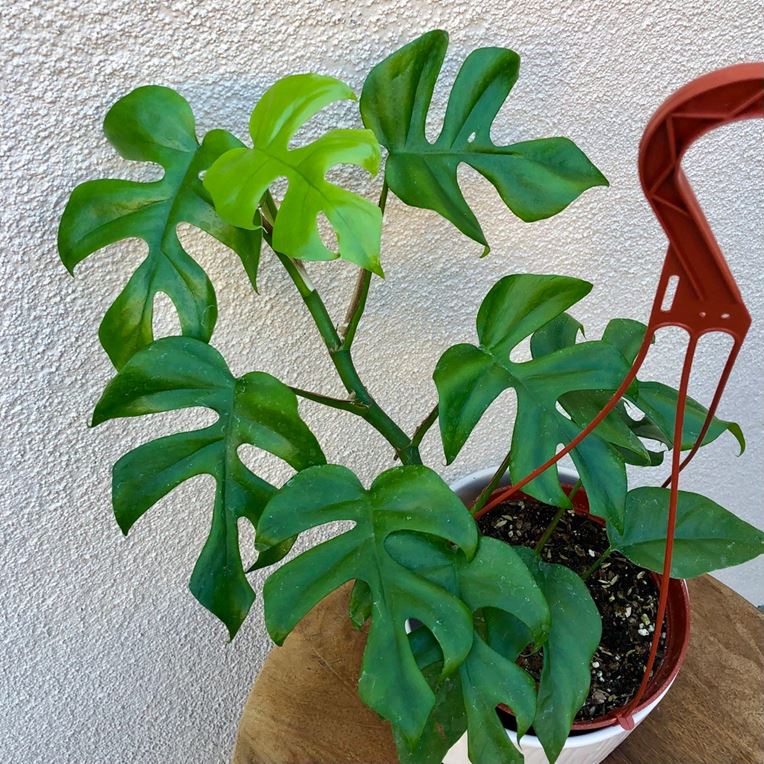
Besides the usual green form that goes for $10 to $25, you can opt for the very expensive variegated Rhaphidophora tetrasperma. These variegated plants are albo with cream or white variegations, aurea (yellowish), and mint (vibrant light green).
If you want these variegated plants, be ready to spend a fortune. They cost between $1500 to $28000 with sale records as high as $17000 plus.
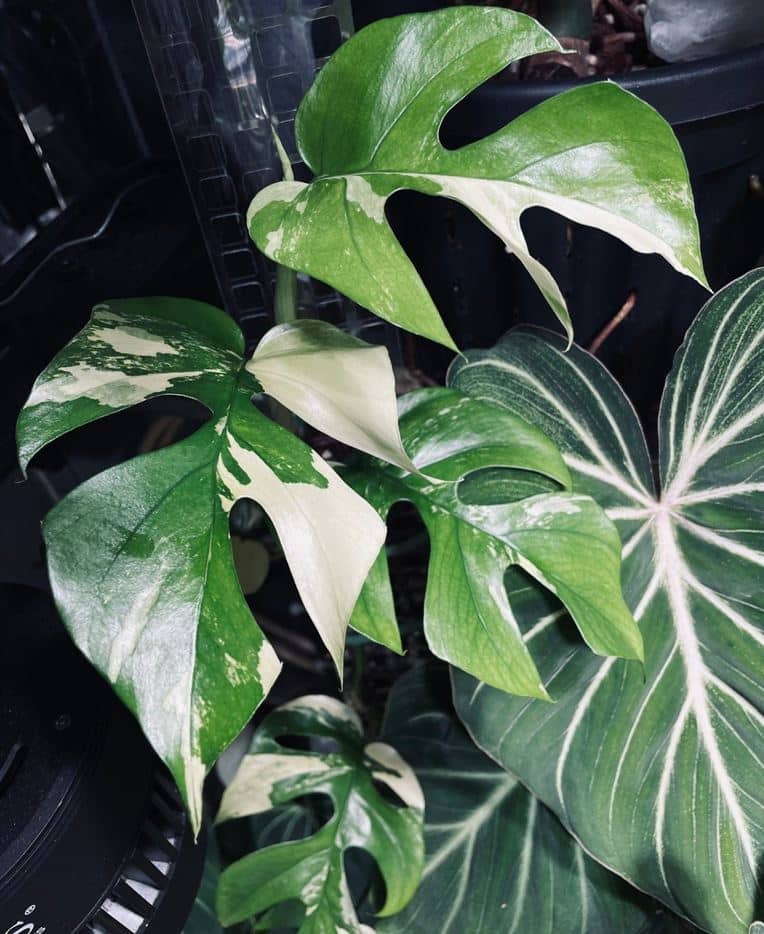
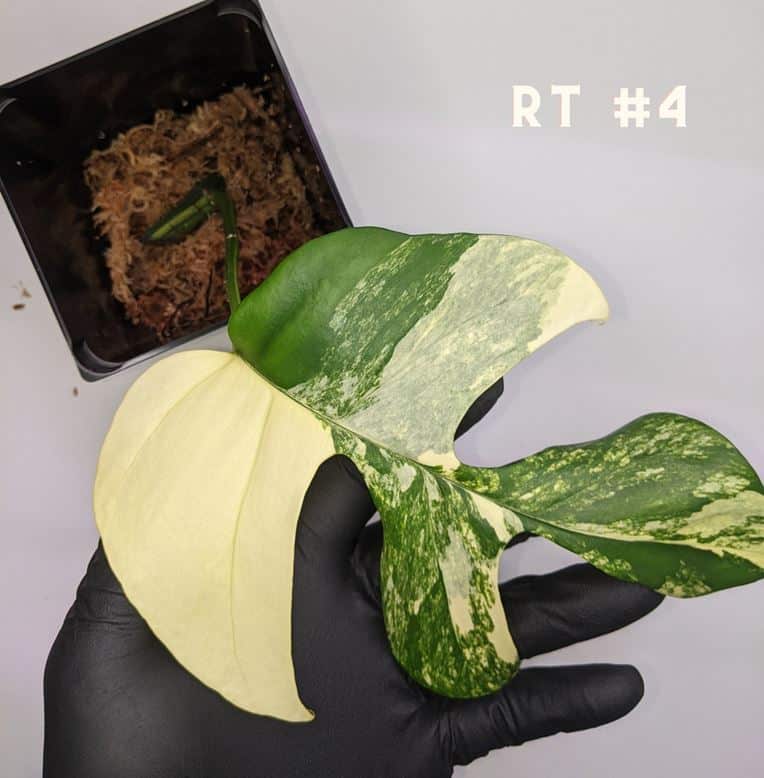

Last but not least, we know there is the tissue culture R. tetrasperma. They do look a little different but shouldn’t worry you. If you don’t want them, ask your vendor.
2. Rhaphidophora decursiva
Rhaphidophora decursiva is one of the gigantic lianas and the second most popular Rhaphidophora house plant. It has green oval leaves that become enormous, irregularly, and asymmetrically split when it matures. Each leaf has about 9-15 pinnae on either lamina side.
Also known as Philodendron decursiva, this aroid resembles Epipremnum pinnatum (Dragon tail plant or centipede Tongavine). But the latter has smaller elliptical to arrow-shaped leaves, not oval. Also, mature leaves are not as large.
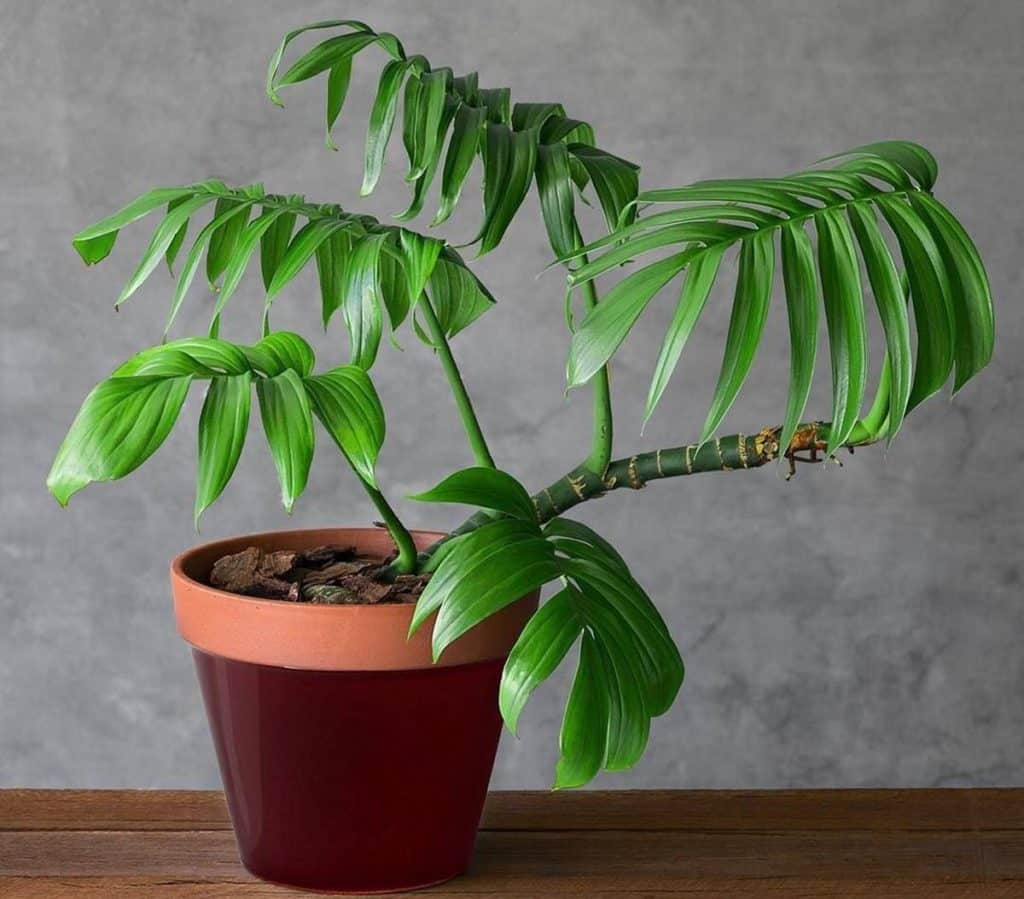
R. decursiva prices range from $15 to $40. But if you want a cutting, you will spend about $5 to $10 depending on if it’s rooted or not.
3. Rhaphidophora hayi
Rhaphidophora hayi is a popular shingling plant with oval, leathery, ascending green leaves that don’t change morphologically at maturity. Also, there is a mint variegated form.
It resembles R. pachyphylla and korthalsii but, of course, with some noticeable differences. For instance, a mature korthalsii will have large, oblong, entire to split leaves.
On the other hand, R. pachyphylla leaves are stiff and more petite. Also, it doesn’t have disarticulating side shoots or the occasional foraging shoots that R. hayi may have.

The R. hayi sells for $10 to $50, and if you want the mint variegated, you will pay about $100 to $300.
4. Rhaphidophora cryptantha
Rhaphidophora cryptantha is the most charming of all the shingling Rhaphidophora lianas. We bet you will like its heart-shaped dark green to velvety green leaves with silvery or grayish markings that remain the same in maturity.
Cryptantha somewhat resembles Monstera dubia, except that M. dubia has a silvery sheen on its green leaves except along veins, and leaves are descending, not ascending. Also, its mature leaves have splits and fenestrations.
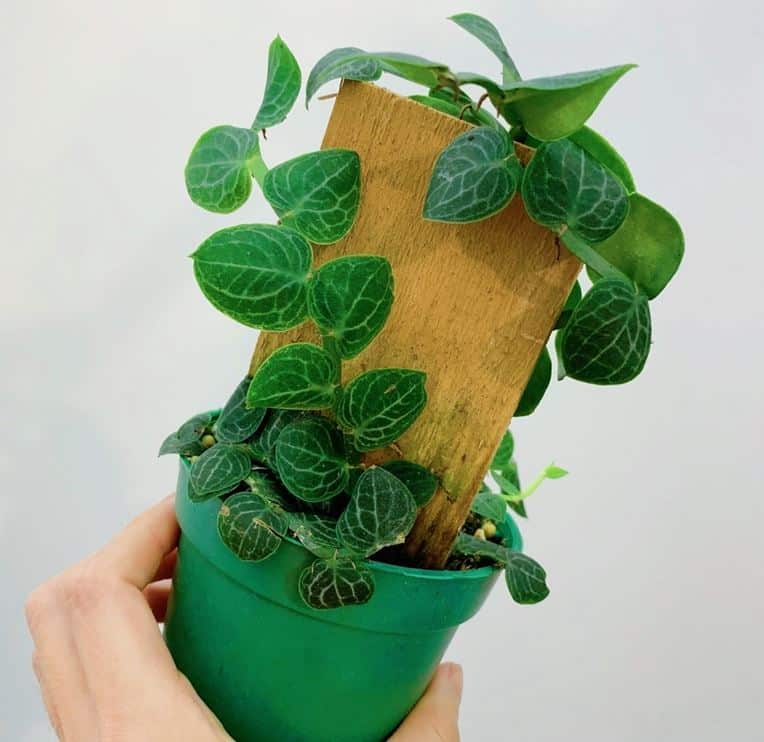
If you want to buy one, R. cryptantha goes for $20 to $50. But if you go for a cutting, it will be much lower.
5. Rhaphidophora pertusa
Rhaphidophora pertusa has elongated entire juvenile green leaves that may be oval, oblong, or oblong-elliptic. As this plant matures, the leaves become large, irregularly pinnatifid (split shallowly), and may have fenestrations (holes) that go to near the leaf margin.
Mature plants resemble R. tetrasperma. But pertusa is leafier, grows larger in the wild, and the splits are irregular. Also, it has holes that extend to the margin, shorter internodes, and thicker stems.
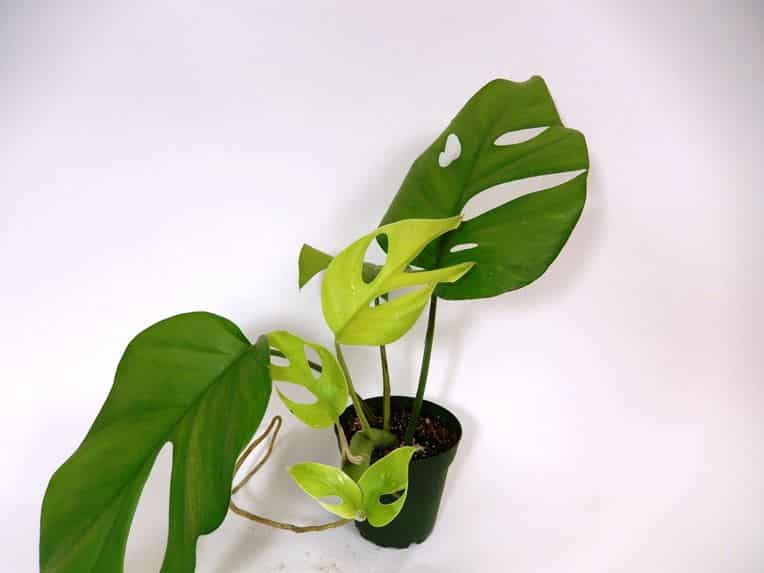
Prices of this charming tropical aroid range between $35 to $120 depending on usual market factors.
6. Rhaphidophora foraminifera
Rhaphidophora foraminifera has lovely oblong-elliptic or oblong-lance-shaped green juvenile leaves that develop rhombic to round holes arranged near the rib as it matures. Also, the leaves become larger.
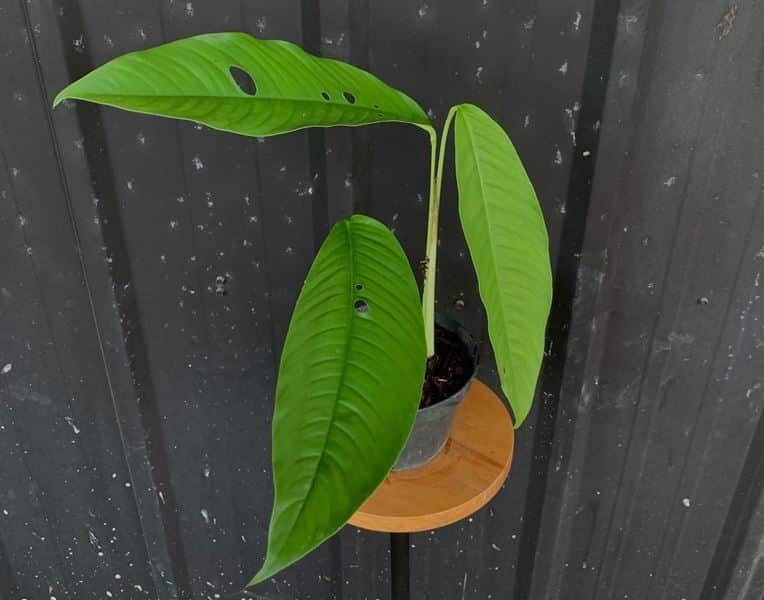
Besides the usual green form, whose price ranges from $30 to $100, there are rare variegated R. foraminifera forms with albo selling at $300 to $600 and mint variegata $300 to $1500.
The mint variegated has vibrant light green sectors, marbling, and blotches, while these markings are cream to white in albo.
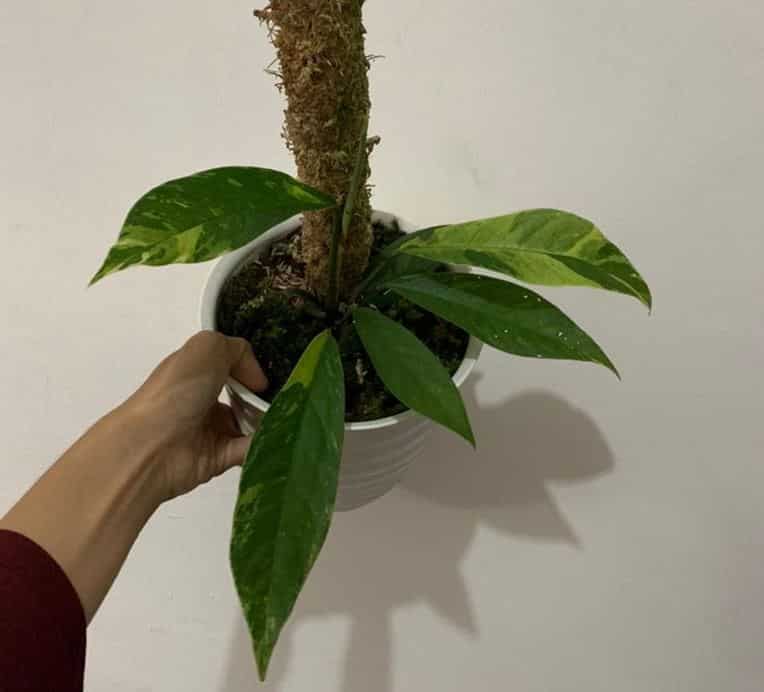
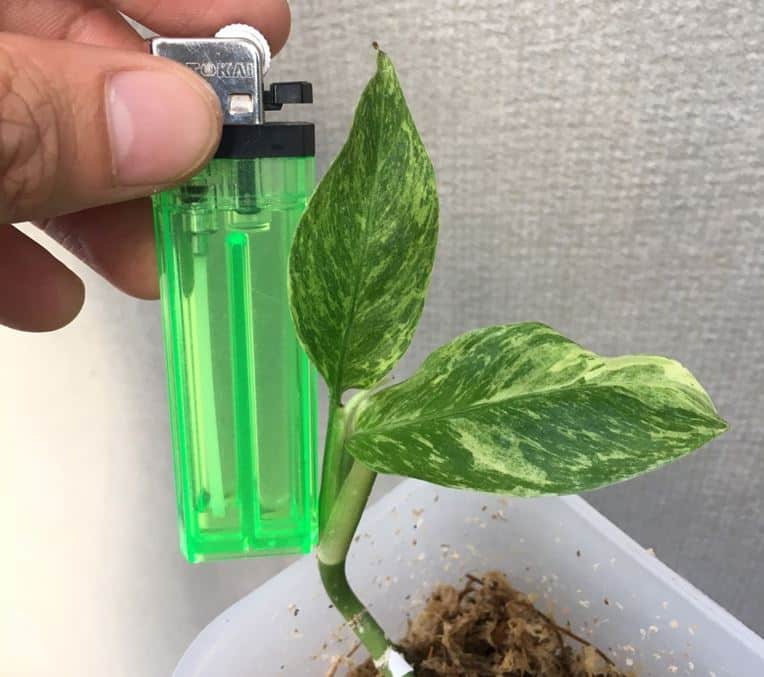
7. Rhaphidophora korthalsii
Rhaphidophora korthalsii or Rhaphidophora celatocaulis is another shingling plant with entire lance-shaped juvenile leaves with a slightly heart-shaped base. It will have erect (stops shingling), large, whole, or shallow to deeply split leaves as it grows to maturity.
Many people confuse the mature form with tetrasperma. But mature korthalsii leaves are larger, narrower, and the pinnae are stilted (have holes near the midrib).
R. korthalsii price ranges from $20 to $60 for the green form. We’ve seen a few people selling variegated Rhaphidophora korthalsii for more than $700.

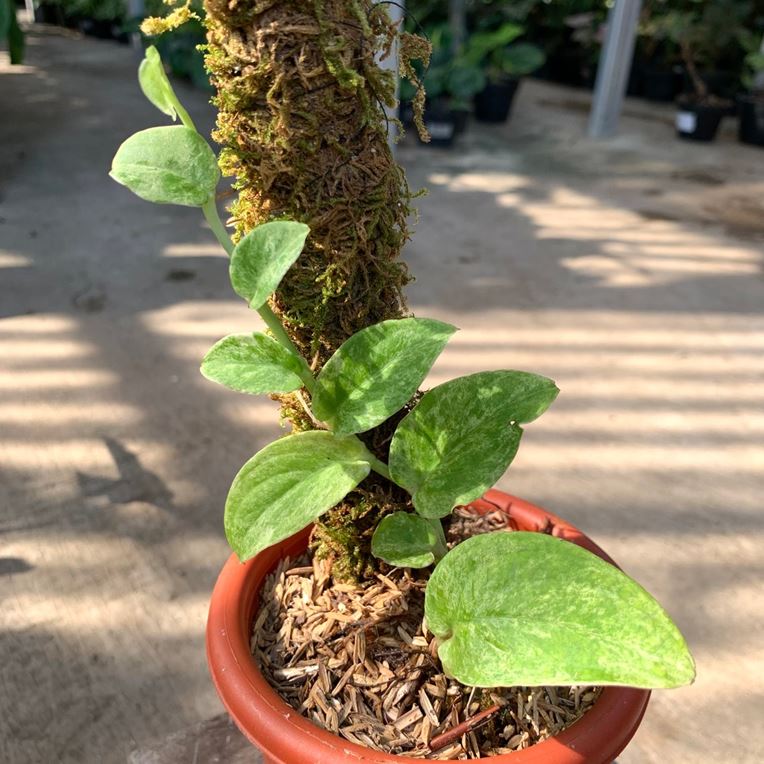
8. Rhaphidophora pachyphylla
Not many people know of Rhaphidophora pachyphylla. But this shingling liana with narrowly oval-elliptic stiff, leathery leaves is another wonderful aroid. Unlike other plants in this genus, it retains its juvenile leaves appearance, i.e., it doesn’t transform at maturity. But they may become a little larger as it climbs.
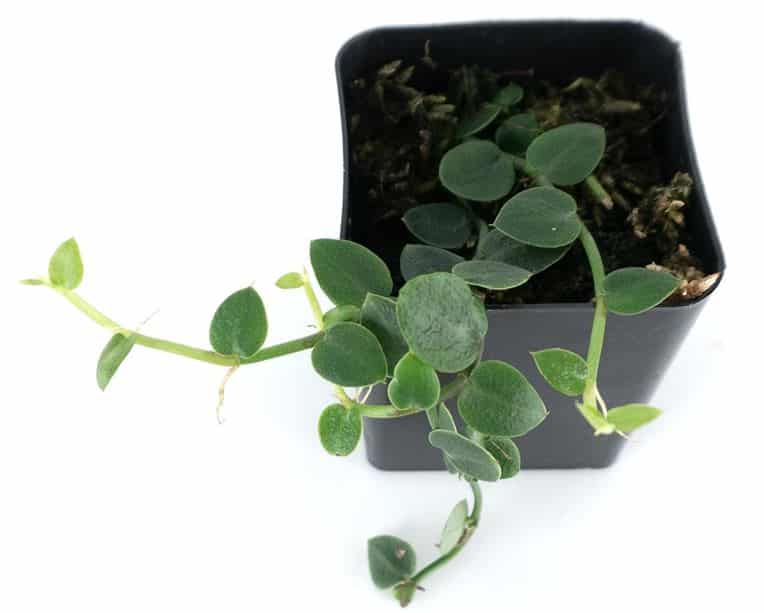
What people sell as this aroid looks slightly different, i.e., it has oval leaves with a nearly heart-shaped base. But it still looks wow. It costs only $10 to $25. Unfortunately, not many people sell it.
9. Rhaphidophora beccarii
The juvenile shingling oblong leaves and the mature whole or split (pinnatifid to pinnatisect) to green leaves make this aroid beautiful.
Unlike other plants in this genus, Rhaphidophora beccarii is the only obligate rheophytes (grows in fast-moving water) besides Rhaphidophora geniculata. It doesn’t get large and rarely grows as a liana.
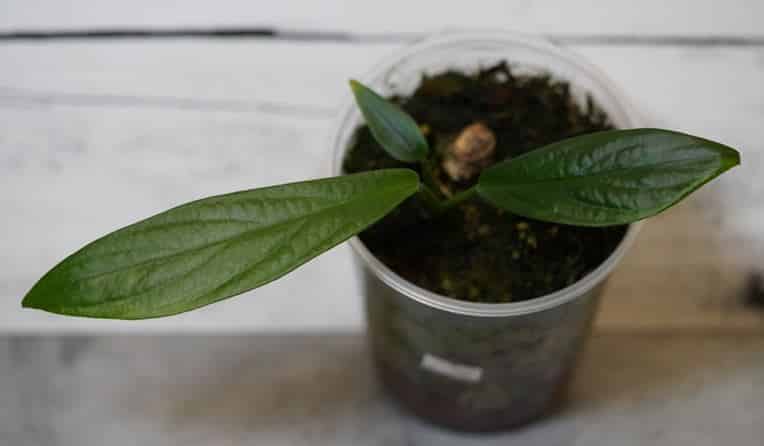
If you love this adorable plant with oblong-elliptic to narrowly lance-shaped and slightly oblique mature leaves, be ready to part with $50 to $300. Even with this hefty price, it is still hard to find.
10. Rhaphidophora tenuis
What makes Rhaphidophora tenuis a houseplant you should never miss is the elongated, falcate-lance-shaped green shingling leaves. It is something that most shingling plants don’t have. When it matures, the leaves become large and split.
Tenuis is a scarce gem that will cost you anything from $45 to $120, and not many people have it even on Etsy.com, eBay, Facebook, or Instagram.
Where to buy Rhaphidophora
Where to buy Rhaphidophora depends on the species you need. Popular ones like R. tetrasperma, hayi, cryptantha, or decursiva are easy to find. Some like R. hayi are available at most big box stores. But if you want rare or less common ones, you will have to dig hard.
The first place to start with is Etsy.com. This marketplace has the most extensive plant inventory, with even renowned vendors selling there. You will get almost the species we have talked about at the best prices.
What’s more, Etsy.com has vendors from all over the world. So, you will quickly get the plant irrespective of whether you are in the US, Canada, UK, Australia, New Zealand, Germany, etc. Just get a positively rated vendor near you or ships to your location.
Besides Etsy.com. The other place to buy from is eBay. It also has an extensive inventory, and people can buy from worldwide.
Another place to find Rhaphidophora on sale is Facebook and Instagram. You will find vendors with almost any species you want. Stick to those with positive ratings, and you can trust them.
If you haven’t still gotten a vendor, use the google search engine and search for the species you want. For instance, you can google “Rhaphidophora tetrasperma for sale” or “Rhaphidophora decursiva for sale” and see what results you get. We bet you will get vendors near you.
Rhaphidophora care
As tropical plants, they love the warm and humid area. But ensure they only receive indirect light.
Here is a summary of Rhaphidophora care:
- USDA hardiness zone: 11 to 12. Avoid frost or freezing temperatures.
- Humidity: They can tolerate average household humidity but will grow best at average to above average, 50% or more. To raise the humidity, and mist plants, use a pebble tray, and buy a humidifier like AquaOasis™ Cool Mist Humidifier (best seller Amazon.com)
- Temperature: 55 to 85°F (12.8-29°C) but grows best at 70-80°F (21-27°C). Avoid sudden temperature changes, cold drafts, or placing them near heat or cooling vents.
- Light needs: Provide bright, indirect light for at least 12 hours a day. Don’t place them under direct sunlight, and if your house has low light, buy a grow light with 10,000 to 20,000 lux (1000-2000 foot-candle). Go for Relassy 15000Lux Sunlike Full Spectrum Grow Lamp. It is a great brand.
- Best soil: Rhaphidophora needs airy, well-drained soils rich in organic matter. You can make one at home. But if you don’t want the making hassle, buy an aroid mix from Etsy.com.
- Watering: Water when the top 1-2 inches of the potting mix feels dry when you touch it. The exact duration will vary with conditions and other factors. So, please don’t follow a schedule.
- Feeding: Feed monthly with an all-purpose, balanced, liquid houseplant fertilizer at half strength during growing months. A brand like Bonide Liquid Plant Food 10-10-10 will work well.
- Pruning: Routinely remove dead, damaged, or diseased leaves with sterilized gardening scissors. You can cut back a few branches to keep the size or shape in spring.
- Repotting: Repot yearly or when rootbound. Use a pot 2-3 inches wider in diameter.
- Staking: Give your plants a place to climb like a totem, trellis, moss pole, etc., to this climbing lianas.
Common Rhaphidophora problems
While growing your Rhaphidophora, it may end up with some problems like leaf discoloration, pests, diseases, etc. Here are issues to expect and possible causes.
1. Pests
Pests are rare. But they can occur, and the expected culprits are thrips, spider mites, and scale insects. Others are mealybugs, thrips, and whiteflies.
These bugs will appear as bumps, dots, spots that may move or not, and some fly, leap or have waxy bodies. You will find them on lower leaves or hidden parts of the plant.
Signs depend on the bug present. Some include honeydew, sooty mold, silvery stippling, webbing, black, brown, whitish, or yellow spots, etc. In heavy infestation, leaves will fall, look curly, distorted, or turn yellow. By this time, you will have noticed these pests.
Use insecticidal soaps like Garden Safe Brand Insecticidal Soap Insect Killer, neem oil, or horticultural oil sprays to treat these pests.
2. Diseases and root rot
Diseases are not common except Rhaphidophora root rot. But your plant can have fungal and bacterial leaf spots, blights, or rusts. Signs to expect are brown or black lesions that may have a yellow halo. If water-soaked, it is likely a bacterial infection.
On the other hand, root rot is prevalent for people fond of overwatering these aroids. Signs include yellow leaves, wilting and drooping, leaf scorch, moldy potting mix, or mushy stem base.
More signs are stunted growth, leaves drooping, and sudden plant collapse. Also, some root rot causes may affect leaves and stems, causing brown or black lesions.
To prevent diseases, practice good hygiene (wash hands before handling plants, sterilize gardening equipment or pots) and water your plants well. Also, ensure your potting mix drains, and your planter has drainage holes.
For bacterial diseases, discard the affected plant. If you have fungal, cut affected parts and use a fungicide to treat your plant.
What about root rot? The solution depends on the extent of the damage. If the whole root ball isn’t rotten, you can save your plant. Repot to fresh potting mix after cutting decayed bits and dipping your plant in fungicide.
3. Leaves turning yellow
Overwatering is the most often reason for Rhaphidophora yellow leaves. To confirm this, check if your potting mix is always soggy or any signs of root rot. If not, it may be other things like too much or too little light and nutritional deficiencies.
The less likely reasons are underwatering, low humidity, heat stress, pests, disease, and overfeeding. But the yellowing may be a normal part of aging if it occurs to a few more down, older leaves.
4. Leaves turning black or having black spots
Do your Rhapidophora leaves, or even stems have black spots? The likely cause is pests or diseases. Diseases will cause lesions that may be water-soaked or not. Also, they may have a yellow halo.
Less likely that black spots or leaves turning black is overwatering and frost damage.
5. Brown leaves, edges, tips, or patches
Rhaphidophora leaves brown tips, edges, or patches are a sign of leaf scorch whose causes include underwatering, too much light or heat, low humidity, and rarely fertilizer burns. But if you recently repotted your plant or its rootbound, these two could also be causes.
On the other hand, if you see brown spots, possible causes are diseases and pests, and the whole leaf turning brown may indicate cold drafts.
6. Leaves curling
Plants curl leaves to help mainly minimize water loss and, at times, protect themselves from too much light. So underwatering and low humidity are the most common causes. But too much light, heat stress, root rot, overwatering, etc.
To know the reason, look at anything that makes your plant lose water faster than it can absorb or not absorb is a potential cause.
7. Drooping
Reasons for Rhaphidophora leaves drooping are similar to those that cause leaf curling. Drooping is a sign that cells don’t have water which keeps them turgid. Check for underwatering, low humidity, heat stress, too much light, etc.

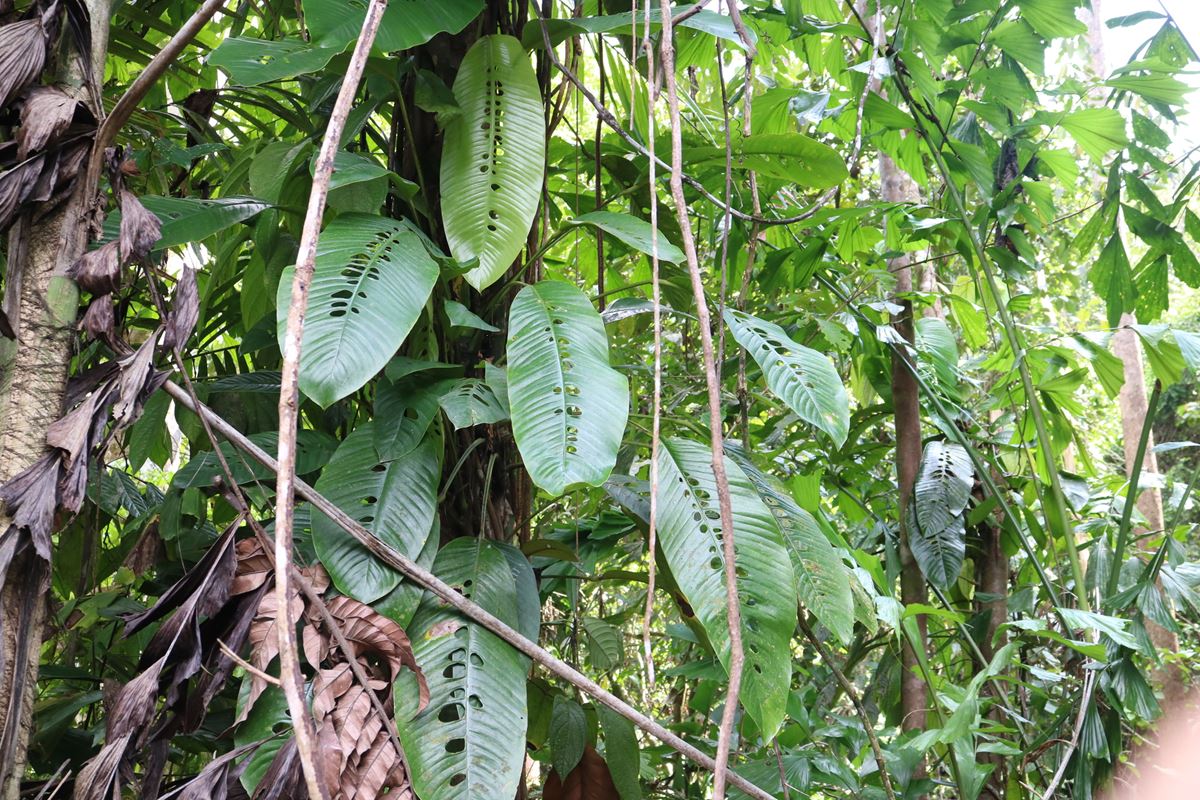

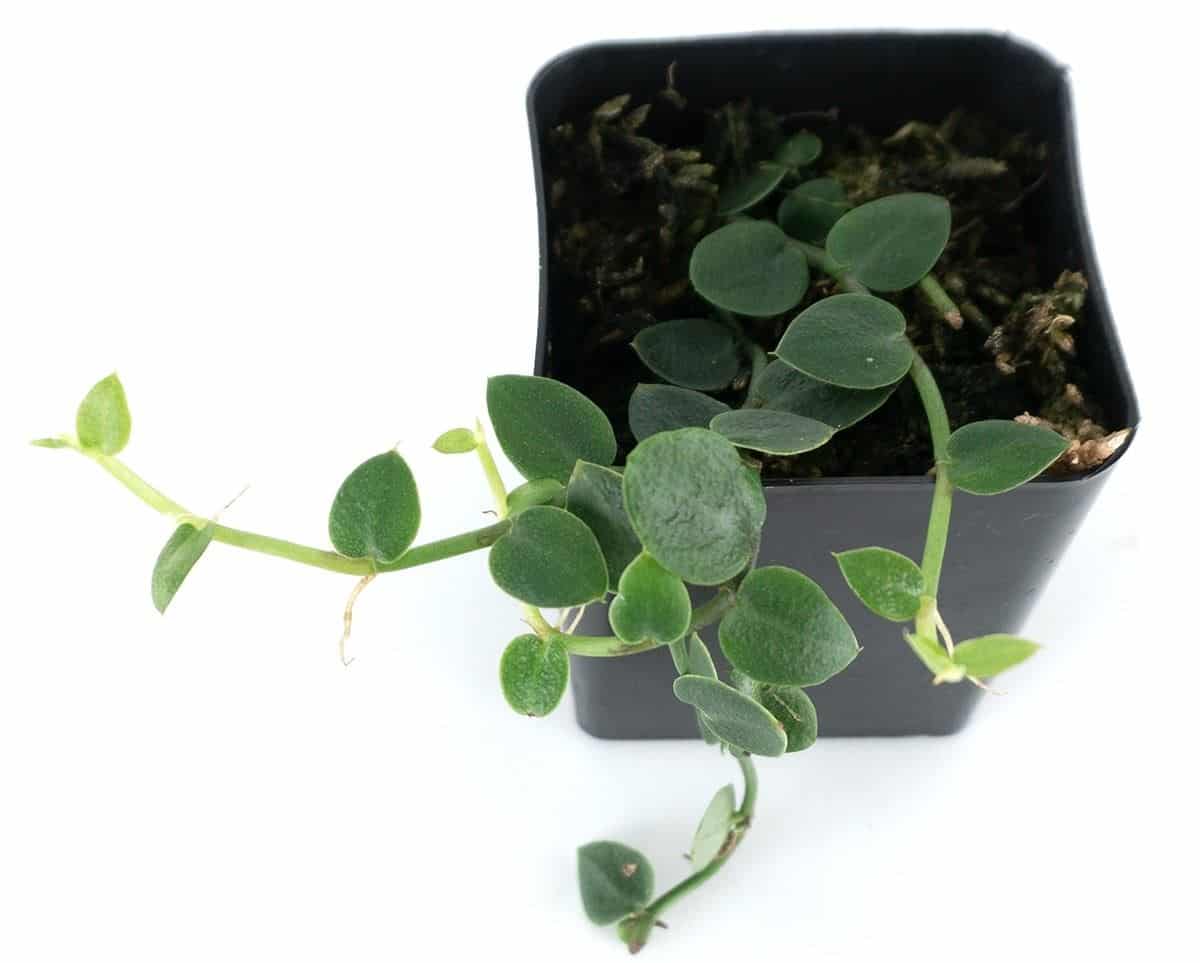

Leave a Reply